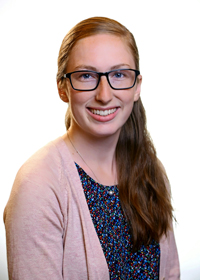Transient Porosity in Metal-organic Liquids: Ligand Design and Synthesis
Malia Wenny, Harvard University

Porosity - empty space - is a familiar and useful feature of many solid materials. In particular, solids with pore sizes on the order of angstroms and nanometers are studied extensively for applications in energy storage, gas separations, drug delivery, sensing and catalysis. Porous solids have been an active area of research for more than a century, but new porous materials with unique properties and functions are needed to improve existing technologies and enable future technological breakthroughs. Liquids present an intriguing and unexplored platform for the discovery of new porous materials with properties and functions that would be impossible to achieve in a solid. Unlike solids, liquids are fluid and exhibit surface tension, viscosity, capillary action, wettability and miscibility. Although tiny pores do form and collapse within any liquid as its constituent molecules, atoms or ions move, vibrate and rotate, the size of these transient pores is smaller than even the smallest molecule. This research aims to develop a new class of liquids with molecule-sized transient pores by taking guidance from two workhorse fields of chemistry: metal-organic frameworks and ionic liquids. Metal-organic frameworks leverage coordination chemistry to build porous architectures, while ionic liquids provide design principles for making multicomponent materials that are liquids near ambient temperature. The ligands synthesized here are designed to bridge multiple metals and promote low-temperature melting transitions through a combination of diffuse charge, low symmetry and increased flexibility. These ligands, when combined with appropriate metals, will create pores that transiently form and collapse, resulting in a liquid with bulk, average porosity. Synthesized liquids will be studied with gas solubility measurements, thermogravimetric analysis, differential scanning calorimetry, rheometry, positron annihilation spectroscopy and other spectroscopic techniques. Molecular dynamics simulations also complement experimental work in order to improve understanding of the molecular properties and interactions leading to porosity.
Abstract Author(s): Malia B. Wenny, Jarad A. Mason


